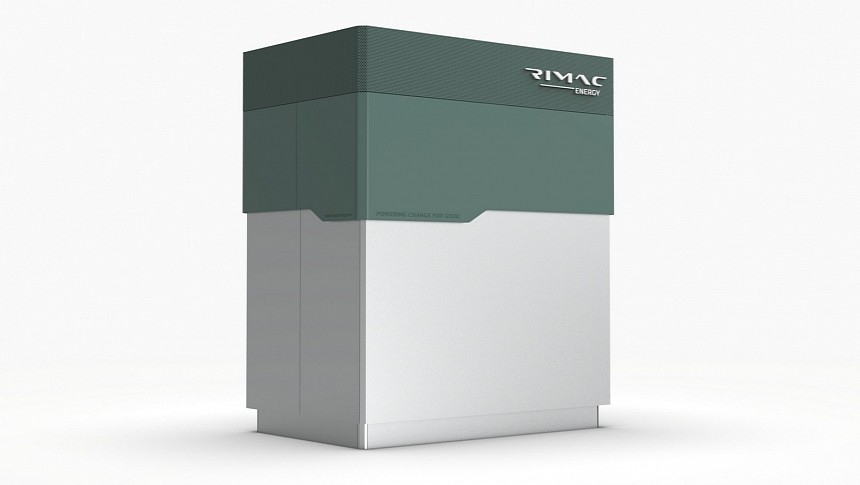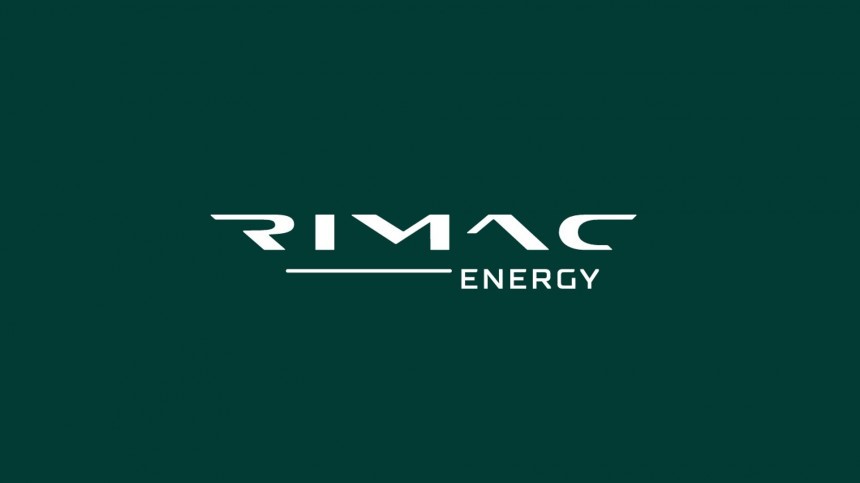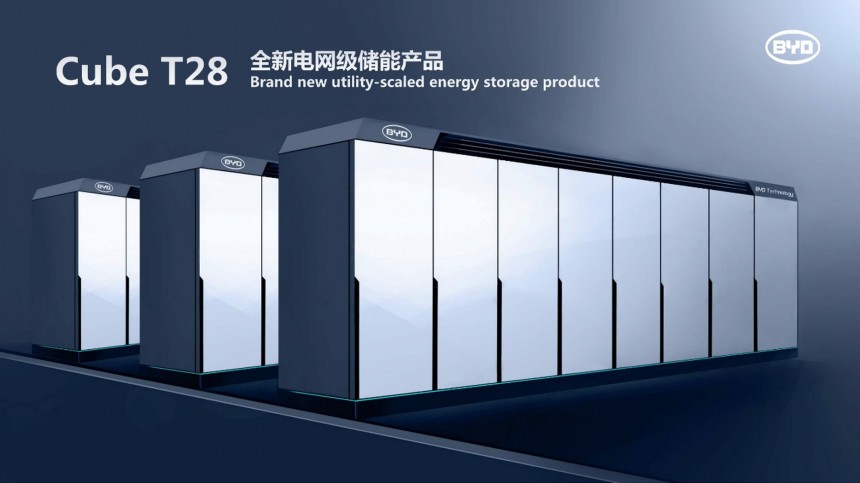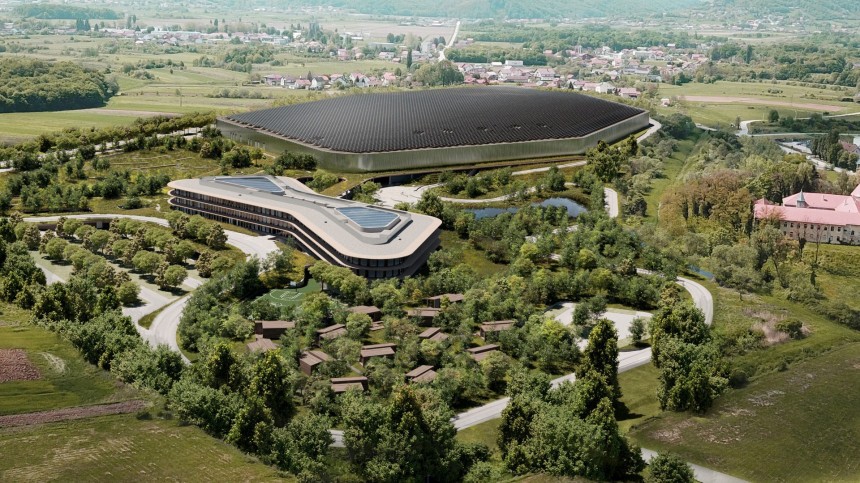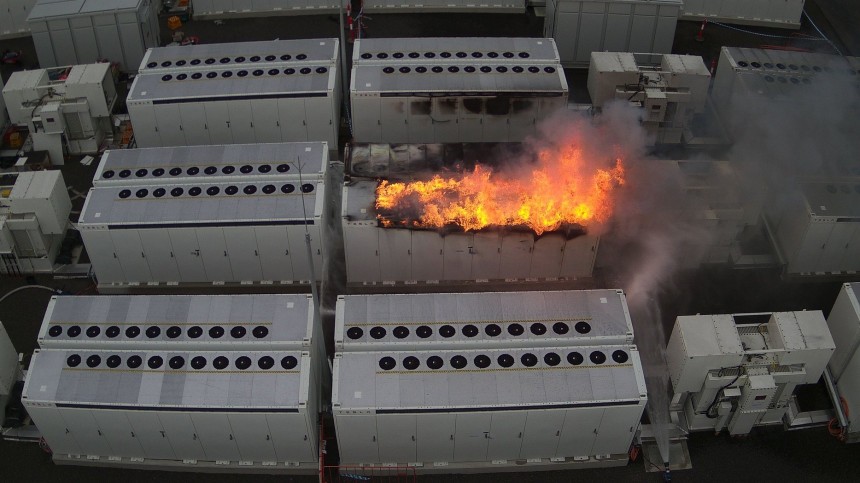Tesla sells electric cars and energy storage systems (ESS), such as Powerwall and Megapack. BYD also does that, so it is no surprise that Rimac thought that was a good idea. The company announced on May 4 that it will have a new division called Rimac Energy. Instead of focusing on houses, the new enterprise will concentrate on "large commercial, industrial, and utility-scale applications." In other words, it will skip Powerwalls and tackle Megapacks from the get-go.
That makes a lot of sense. Although home storage is relevant, it is already a busy business environment, with many more companies selling ESSs apart from Tesla. Selling to the retail segment also demands high volumes to make sense. By working on bigger ESSs and selling them to massive companies, Rimac Energy can make profits faster while spending less energy in the process.
In a way, it is like the company acts in the automotive world: Rimac sells very exclusive electric hypercars that cost a fortune. Only a handful of people in the world can afford them, which allows the Croatian automaker to give them more attention and solve any issues a lot faster. That also preserves the service quality and the sense of exclusivity. However, industrial and commercial customers are not after that: they want the best value for the buck.
Rimac Energy said it will address that by offering ESSs that reduce energy losses by 50% and present a system footprint that is 40% smaller when "compared to current state-of-the-art solutions." Was it referring to Tesla Megapacks, or is there anything better in that market, such as the BYD Cube T28? The deal is that Rimac Energy's "novel battery architecture" did the trick. The Croatian company promised to disclose more details in the future.
BYD is the only company in charge of all elements in its products, including the batteries that compose the Cube T28. Tesla treats cells as commodities, and it seems that Rimac Energy will follow the same path. On Rimac Technology's page, the company states it "is working with most major cell manufacturers." It may want to change that strategy with Rimac Energy. When you sell electric hypercars, cell prices are not an issue. When you address big companies, cost is king. As innovative as the company's "novel battery architecture" may be, controlling its most crucial element is a competitive edge only BYD has so far.
Rimac Energy also did not disclose which chemistry it plans to use in its ESS. Although the most logical option is lithium iron phosphate (LFP), the smaller footprint the system presents may also have to do with more energy density in its cells. For the energy losses to be lower, this chemistry also needs to accept charge without much resistance, which is almost like supercapacitors behave. Resistance dissipates energy in the form of heat.
The new enterprise already has customers. Rimac Energy did not disclose who they are, but the first one is almost obvious. The Croatian company said the pilot operation should happen "with a leading renewable energy company." As with all companies with solar and wind power plants, it needs effective energy storage solutions. Solar and wind energy cannot be generated on demand. Nowadays, a lot of the electricity generated by these means is lost because the companies do not have how to store it to release it at peak times.
The pilot tests should start in 2024. If everything goes according to the plan, mass production of Rimac Energy's ESS should kick off in 2025 at the Rimac Campus, close to Zagreb, Croatia. The company expects to scale output to "more than 10 GWh" per year, but it did not disclose when that should happen.
Either Rimac Energy has a cheaper solution or a more effective one, which will compensate for a possibly higher cost with better performance. If it loses 50% less energy, that suggests it delivers 50% more electricity than "current state-of-the-art solutions." The Croatian company may have other compelling arguments to expand its customers' list, especially in what relates to safety.
Tesla has faced at least two blazes with Megapacks. The first happened on July 30, 2021, at the Victorian Big Battery in Victoria, Australia. Luckily, the ESS was still on tests. A short circuit caused the fire, which took four days to be fully controlled. The second one happened on September 20, 2022, at the Elkhorn Battery Storage in California. In both cases, toxic fumes coming from the burning Megapacks made authorities issue a shelter-in-place advisory. I am not aware of any fire report involving BYD ESSs.
Rimac has never expressed any ambitions of saving the world one car at a time or becoming an energy company. That said, it is curious that it has chosen to compete in the ESS market. If it felt it had developed a superior technology for this type of equipment, it could license it and enjoy the royalties. It must have seen an unmissable opportunity we may only fully understand in a few years.
In a way, it is like the company acts in the automotive world: Rimac sells very exclusive electric hypercars that cost a fortune. Only a handful of people in the world can afford them, which allows the Croatian automaker to give them more attention and solve any issues a lot faster. That also preserves the service quality and the sense of exclusivity. However, industrial and commercial customers are not after that: they want the best value for the buck.
BYD is the only company in charge of all elements in its products, including the batteries that compose the Cube T28. Tesla treats cells as commodities, and it seems that Rimac Energy will follow the same path. On Rimac Technology's page, the company states it "is working with most major cell manufacturers." It may want to change that strategy with Rimac Energy. When you sell electric hypercars, cell prices are not an issue. When you address big companies, cost is king. As innovative as the company's "novel battery architecture" may be, controlling its most crucial element is a competitive edge only BYD has so far.
The new enterprise already has customers. Rimac Energy did not disclose who they are, but the first one is almost obvious. The Croatian company said the pilot operation should happen "with a leading renewable energy company." As with all companies with solar and wind power plants, it needs effective energy storage solutions. Solar and wind energy cannot be generated on demand. Nowadays, a lot of the electricity generated by these means is lost because the companies do not have how to store it to release it at peak times.
Either Rimac Energy has a cheaper solution or a more effective one, which will compensate for a possibly higher cost with better performance. If it loses 50% less energy, that suggests it delivers 50% more electricity than "current state-of-the-art solutions." The Croatian company may have other compelling arguments to expand its customers' list, especially in what relates to safety.
Rimac has never expressed any ambitions of saving the world one car at a time or becoming an energy company. That said, it is curious that it has chosen to compete in the ESS market. If it felt it had developed a superior technology for this type of equipment, it could license it and enjoy the royalties. It must have seen an unmissable opportunity we may only fully understand in a few years.
